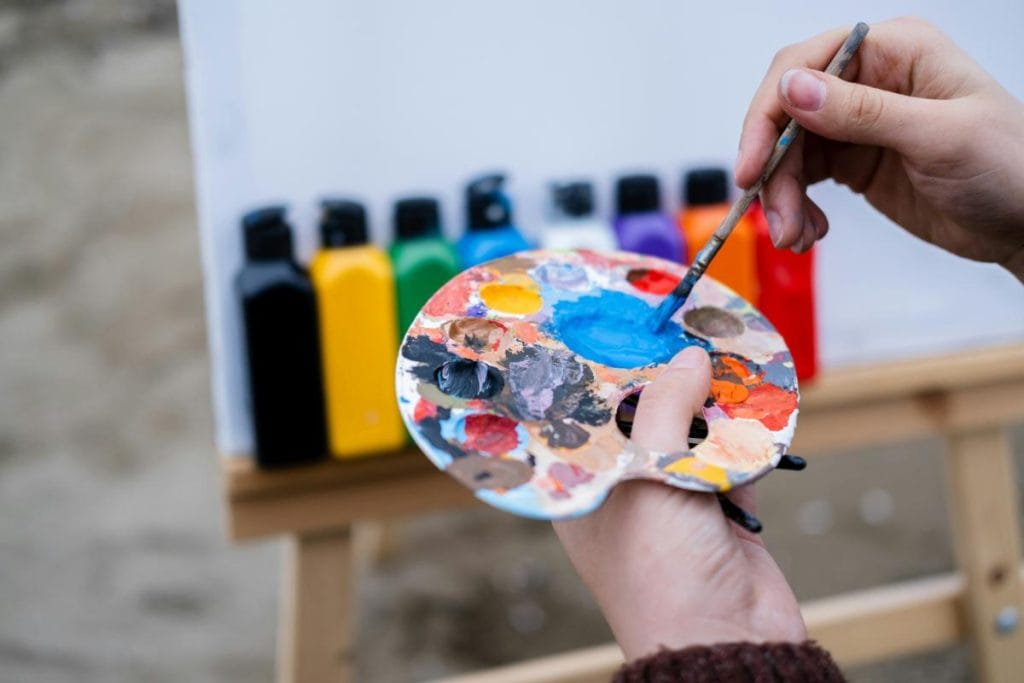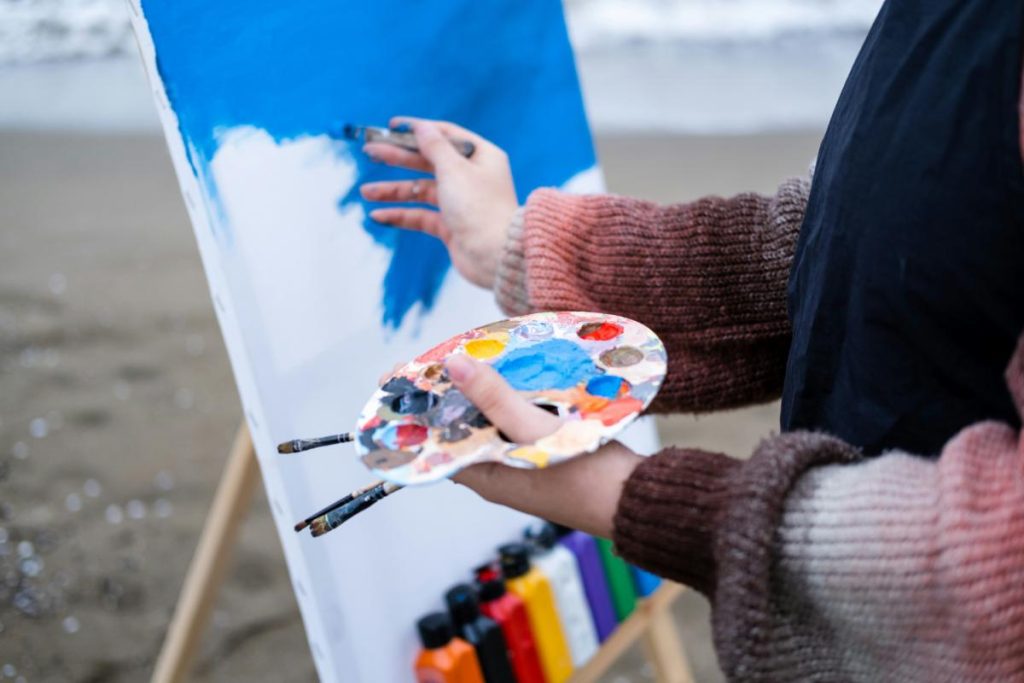
Did you know that 85% of job success comes from skills like communication and creativity, which are often nurtured through arts education? In an increasingly STEM-driven world, the importance of integrating arts into the curriculum is becoming clearer. You might wonder how this blend of disciplines can enhance not just individual creativity but also broader problem-solving skills essential in today’s workforce. Exploring this connection could reveal unexpected insights into how we prepare students for future challenges and opportunities.
Defining Arts Education
Defining arts education reveals a rich tapestry of disciplines that nurture creativity, critical thinking, and cultural awareness. It encompasses visual arts, music, theater, and dance, each contributing unique perspectives and methods of expression. Engaging in these disciplines fosters not only artistic skills but also enhances cognitive development. Research indicates that students involved in arts education demonstrate improved academic performance, as they learn to think critically and solve problems creatively.
Moreover, arts education cultivates cultural awareness, enabling you to appreciate diverse perspectives and histories. By studying various art forms, you gain insights into different cultures and traditions, fostering empathy and understanding. This connection to cultural narratives encourages you to explore your own identity and express it through artistic mediums.
Additionally, arts education offers invaluable opportunities for collaboration. Working in groups on projects hones your communication skills and teaches you the importance of teamwork. These experiences translate directly into real-world contexts, preparing you for a workforce that increasingly values interdisciplinary collaboration.
The STEM and Arts Connection
The intersection of STEM and arts education embodies a dynamic synergy that enhances both creative and analytical thinking. When you integrate art into STEM curricula, you’re not just adding a layer of creativity; you’re fostering innovation. Research indicates that students who engage in arts education alongside STEM subjects tend to exhibit improved problem-solving skills and higher levels of engagement.
For instance, a study by the Arts Education Partnership found that students involved in arts-integrated learning showed a 20% increase in their ability to analyze and interpret data. This holds true even in flexible learning environments like the best online high school, where integrating arts can lead to measurable improvements in student outcomes.
Moreover, the skills developed through arts education—such as visual thinking, spatial awareness, and narrative construction—can greatly benefit STEM fields. Engineers, for example, often rely on creative visualization to solve complex design problems.
When you encourage students to think like artists, you empower them to approach STEM challenges with a fresh perspective, cultivating a mindset that values experimentation and iteration.
In essence, by recognizing and promoting the connection between STEM and the arts, you’re equipping students with a versatile toolkit. This integration prepares them not only for academic success but also for future careers where creativity and critical thinking are paramount.
Enhancing Creativity in Students
While many educators prioritize core subjects, it’s essential to understand that enhancing creativity in students is fundamental for their overall development. Creativity isn’t just about art; it’s an important skill that fuels innovation and adaptability in any field, including STEM. Engaging students in arts education encourages them to think outside the box, experiment, and approach problems from multiple angles.
Research shows that students involved in arts education exhibit higher levels of engagement and motivation. When you allow students to explore their creative instincts, they develop a sense of ownership over their learning. Activities like painting, music, or drama not only stimulate imagination but also improve cognitive abilities by fostering neural connections in the brain.
Moreover, creativity enhances emotional intelligence. When students express themselves through various art forms, they learn to communicate feelings and ideas, which is essential in a world that increasingly values collaboration.
Incorporating arts into your curriculum doesn’t just enrich the educational experience; it cultivates flexible thinkers. By nurturing creativity, you’re equipping students with skills that will serve them well in any career, making them more competitive in an ever-evolving job market.
Critical Thinking and Problem Solving
Engaging in arts education not only sparks creativity but also lays a foundation for cultivating critical thinking and problem-solving skills.
By immersing yourself in artistic practices, you develop the ability to analyze situations from multiple perspectives. This flexibility is essential in today’s complex world.
Here are four ways arts education enhances these fundamental skills:
- Encouraging Inquiry: Arts education prompts you to ask questions and explore various interpretations, leading to deeper understanding and insight.
- Fostering Innovation: You learn to experiment with different techniques and materials, which encourages you to think outside the box and come up with unique solutions.
- Enhancing Collaboration: Working on group projects in the arts teaches you to communicate effectively, negotiate differing viewpoints, and synthesize ideas, all of which are crucial in problem-solving.
- Building Resilience: Through the iterative process of creating art, you encounter failures and learn to adapt and persevere, reinforcing your ability to tackle challenges head-on.
Incorporating arts into your education equips you with important tools to navigate and solve real-world problems adeptly.

Real-World Applications of Arts
Arts education plays an important role in bridging the gap between creativity and practical applications in various fields. In industries like advertising, design, and technology, artistic skills enhance problem-solving capabilities and innovation. For instance, designers use principles of visual art to create user-friendly interfaces in software applications, demonstrating how aesthetic considerations can improve functionality.
Moreover, architecture relies heavily on artistic concepts to blend form and function. By studying art, architects develop a keen eye for detail and an understanding of spatial relationships, which can lead to groundbreaking structures that are both practical and visually appealing.
In the medical field, arts education contributes to improved patient care; studies show that medical professionals with training in the arts demonstrate greater empathy and communication skills, essential for patient interactions.
Additionally, the integration of arts in STEM fosters a more holistic approach to problem-solving. For example, engineers who engage in creative thinking can develop innovative solutions to complex issues, further driving technological advancement.
Consequently, the real-world applications of arts extend beyond mere aesthetics, proving crucial for innovation and practical execution across multiple disciplines. Ultimately, arts education equips you with invaluable tools for success in an increasingly interconnected world.
Fostering Collaboration and Teamwork
Collaboration and teamwork thrive when arts education is integrated into learning environments. When students engage in artistic activities, they not only express their creativity but also develop essential skills that foster collaboration.
Here’s how arts education enhances teamwork:
- Communication Skills: Artistic projects require clear communication. Students must convey ideas, share feedback, and negotiate roles, honing their ability to articulate thoughts effectively.
- Diverse Perspectives: Arts education encourages students to appreciate different viewpoints. Working on collaborative projects allows them to understand and value diverse ideas, leading to richer outcomes.
- Problem-Solving: Creative processes often involve overcoming obstacles. In arts-based teamwork, students learn to brainstorm solutions collectively, enhancing their critical thinking skills.
- Shared Responsibility: In group arts projects, each member is accountable for the final product. This sense of shared ownership cultivates a commitment to the team’s success and teaches the value of cooperation.
Arts Education in Workforce Development
In today’s rapidly evolving job market, the integration of arts education into workforce development programs is proving essential for cultivating well-rounded professionals. Employers increasingly seek individuals who can think creatively and adapt to change. Arts education fosters these skills by encouraging innovation and critical thinking, equipping you with the ability to approach problems from multiple perspectives.
Research shows that organizations prioritizing creativity in their workforce experience higher levels of employee engagement and satisfaction. When you engage in artistic disciplines, you develop transferable skills such as communication, collaboration, and emotional intelligence. These skills are invaluable in environments where teamwork and diverse viewpoints drive success.
Moreover, as industries become more automated, the demand for uniquely human skills—namely creativity and emotional insight—grows. By incorporating arts education into workforce training, you not only enhance your marketability but also contribute to a more dynamic and adaptable workforce.
Programs that blend technical training with arts education prepare you to navigate the complexities of modern careers, ensuring you remain relevant in a competitive landscape. Investing in arts education is, consequently, a strategic move for both personal and professional development.
Case Studies and Success Stories
Numerous case studies illustrate the transformative impact of integrating arts education into various sectors.
These examples highlight how a blend of creativity and technical skills not only enhances education but also drives innovation in the workforce. Here are four compelling instances:
- STEAM Initiatives: Schools that adopted STEAM (Science, Technology, Engineering, Arts, and Mathematics) curriculums saw a 20% increase in student engagement and performance, demonstrating the benefits of creative thinking in problem-solving.
- Design Thinking in Business: Companies like IDEO have employed design thinking, rooted in arts education, to revolutionize product development. This approach increased their market share by 30%, showcasing how creativity fuels business success.
- Healthcare Innovations: Programs integrating art therapy in hospitals have led to a 40% reduction in patient anxiety levels, proving that arts education can enhance emotional well-being and improve recovery outcomes.
- Community Revitalization: In urban redevelopment projects, arts initiatives contributed to a 50% rise in local business growth, showing that arts can play a significant role in economic revitalization.
These case studies underscore the essential role arts education plays in fostering creativity and innovation across various fields.
Overcoming Misconceptions About Arts
Despite the compelling evidence supporting the integration of arts education, misconceptions persist that undermine its value. Many believe that arts are merely extracurricular activities, not essential for academic success. However, research indicates that students engaged in arts education perform better in their core subjects. For instance, a study from the Arts Education Partnership found that students involved in the arts scored higher on standardized tests than their peers.
Another common misconception is that the arts lack career relevance in a STEM-driven world. In reality, creativity and innovative thinking—skills honed through arts education—are vital in today’s job market. A report from the World Economic Forum highlights that creativity will be one of the top skills needed by 2025.
Additionally, some argue that arts education diverts resources from STEM fields. Yet, integrating arts into STEM—creating STEAM—fosters a more holistic educational approach that enhances problem-solving abilities and critical thinking.
Future of Arts in Education
As education systems evolve, the future of arts in education hinges on recognizing its integral role in fostering a well-rounded skill set.
You’ll find that integrating arts into curricula not only enhances creativity but also prepares students for the complexities of the modern workforce. Evidence suggests that a balanced education, which includes arts, yields numerous benefits:
- Improved Critical Thinking: Engaging with the arts encourages you to analyze and interpret diverse perspectives, enhancing your problem-solving abilities.
- Enhanced Collaboration Skills: Arts education often involves group projects, teaching you how to communicate effectively and work as part of a team.
- Increased Emotional Intelligence: Exposure to artistic expression helps develop empathy and self-awareness, essential traits for personal and professional success.
- Boosted Academic Performance: Studies indicate that students involved in arts programs tend to perform better across all subjects, affirming the arts’ value in a STEM-focused environment.
Incorporating arts into education isn’t just an enhancement; it’s a necessity.
Incorporating arts education into STEM fields isn’t just beneficial; it’s essential. Studies show that students engaged in arts programs score 100 points higher on the SAT compared to their peers. This statistic underscores the profound impact of creativity on academic performance. By blending artistic expression with scientific inquiry, you’re not only enhancing critical thinking and problem-solving skills but also preparing yourself for a workforce that values innovation and adaptability. Embrace this integration to thrive in an increasingly complex world.
